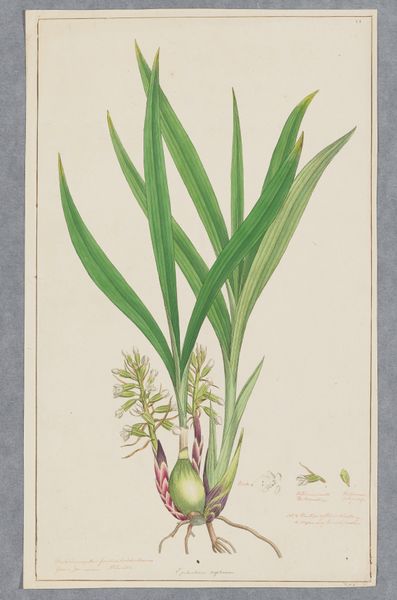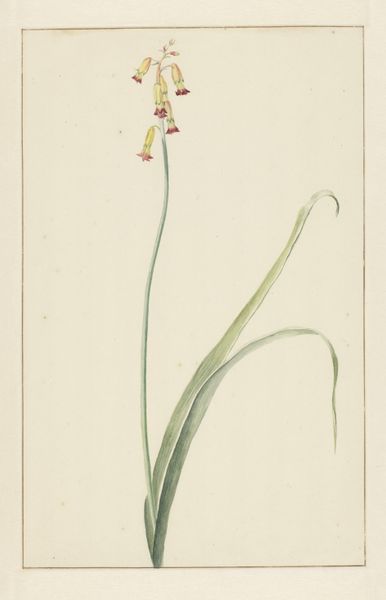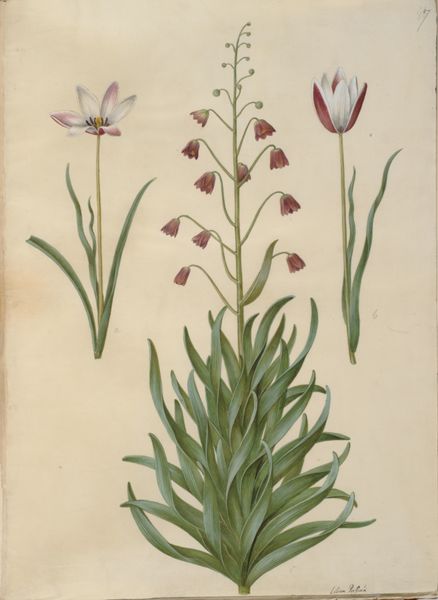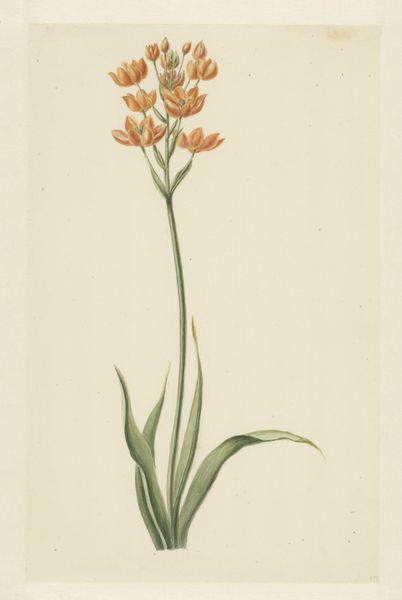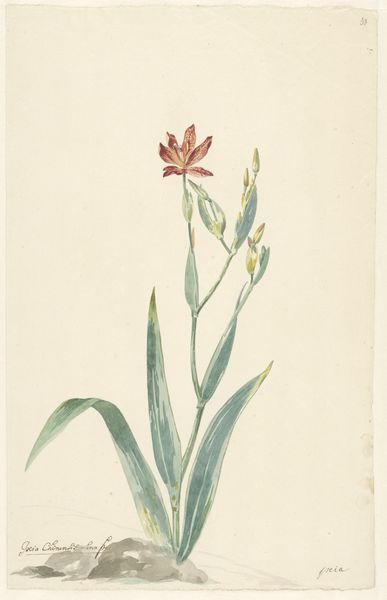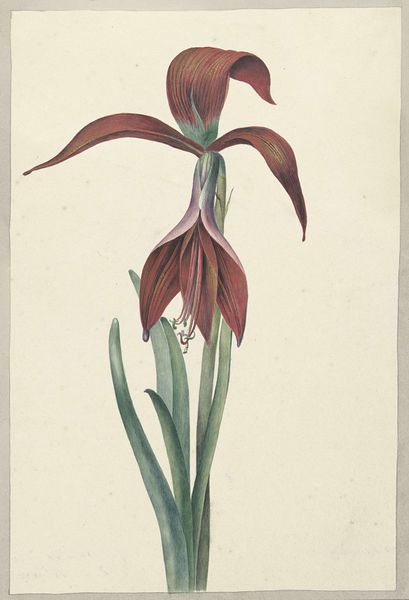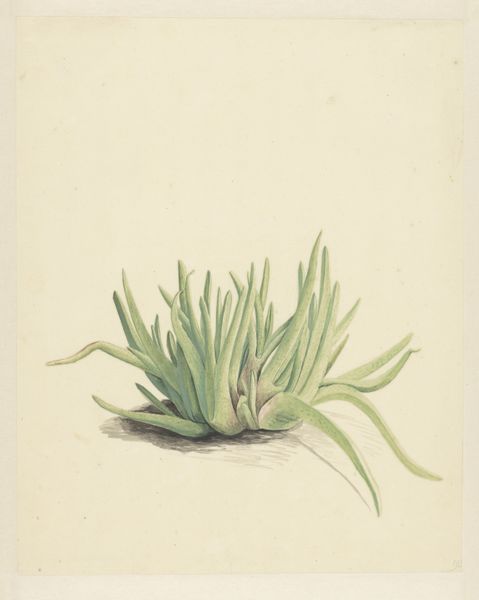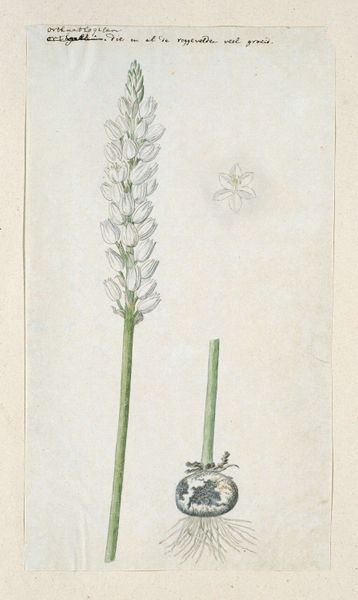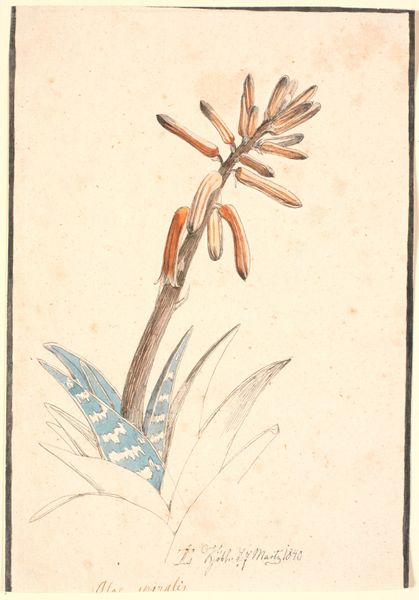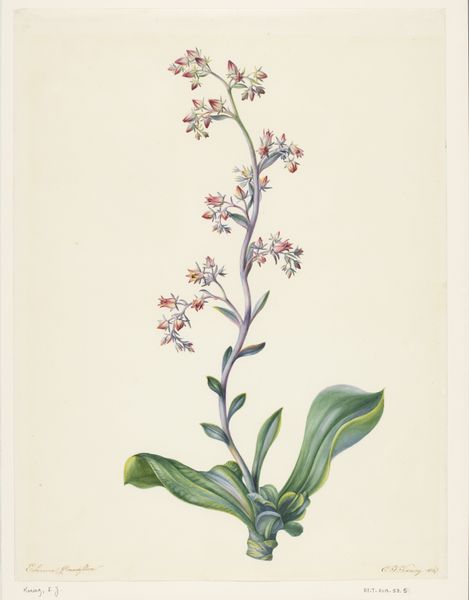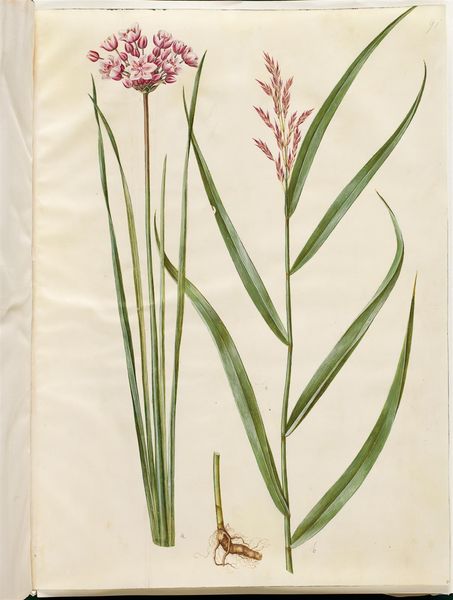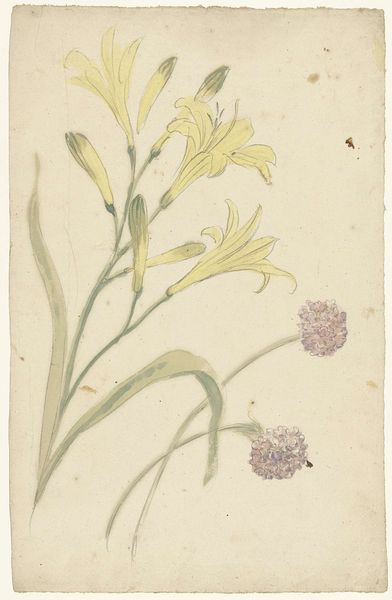
drawing, watercolor
#
drawing
#
baroque
#
landscape
#
watercolor
#
watercolour illustration
#
botanical art
#
watercolor
Dimensions: height 367 mm, width 215 mm
Copyright: Rijks Museum: Open Domain
Editor: Here we have Elias van den Broeck's watercolor drawing, "Crocosmia (Montbretia)," dating from around 1650 to 1708. The botanical detail is lovely. How might we interpret this piece? Curator: Well, I see more than just a pretty picture. The very act of depicting this plant in such detail speaks to the relationship between humans and the natural world at the time. How readily available were these materials: the paper, the pigments used for watercolor? What does that say about trade, labor, and even colonialism if the materials originated from different parts of the globe? Editor: That’s a perspective I hadn’t considered. So you're suggesting we think about where van den Broeck got his art supplies, and the implications of that. Curator: Exactly! And also how the final product may have been circulated - consider the labour of creating copies, the access to learning and knowledge about painting - was it intended as a study? Or for some other consumption? How was botany connected to economy at this time? Editor: So, less about the artistic 'vision,' and more about the physical realities that made the artwork possible, including what it was made of. What the plant was even worth to merchants who had a connection with botany! Curator: Precisely. Examining the materiality of "Crocosmia" offers us insight into 17th and 18th century Dutch culture and trade. Editor: I never thought a simple flower drawing could tell us so much about economics and material culture. Curator: It is through materials and production that an art piece becomes integrated with its environment and historical reality.
Comments
No comments
Be the first to comment and join the conversation on the ultimate creative platform.
